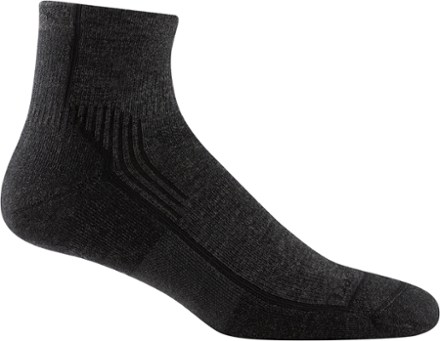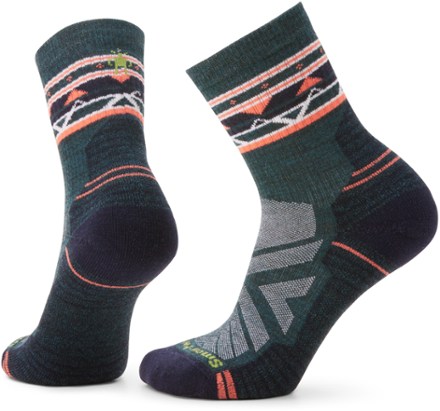Camping gives us the unique opportunity to shed many modern conveniences and enjoy being closer to nature. That doesn't mean giving up the comfort and rejuvenation of sleep. With the right gear and preparation we can sleep soundly as well as appreciate starry night skies and fresh air.
Gear for Sleeping Outdoors
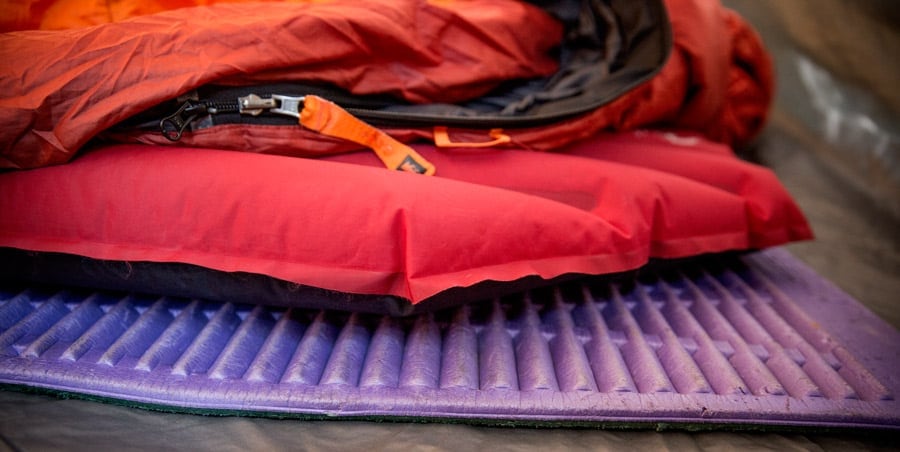
Whether you're camping or backpacking, how can you increase the odds that you'll sleep soundly in the outdoors? A good start is to have the right gear:
Sleeping bag: Choose a sleeping bag with a style and temperature rating appropriate for your destination.
- Car camping bags are typically cut wider, offering more roll-around room (good for comfort) but less efficiency for retaining body heat (not so good on extra-chilly nights). Some rectangular styles can be unzipped to use as a quilt on milder nights.
- Backpacking bags are mummy shaped for a closer, warmer fit, and are usually lighter in weight. Many are filled with goose or duck down, which compresses more readily than synthetic fill.
For more guidance, read our articles on how to choose sleeping bags for camping or sleeping bags for backpacking and shop REI's selection of sleeping bags.
Sleeping pad: There are three types of sleeping pads—self-inflating, air and closed-cell foam. When car camping, weight is not an issue, so you can enjoy a thicker, wider pad or mattress for comfort. When backpacking, weight is crucial, so a super-lightweight air pad or closed-cell pad may be your optimal choice. For more guidance, read Sleeping Pads: How to Choose and shop REI's selection of sleeping pads, cots and hammocks.
Pillows: Bring one from home or use a small foam or inflatable camp pillow. Some sleeping bags have a pocket to hold a pillow or folded up clothing, such as a down jacket or fleece sweater. Shop REI's selection of pillows.
Eye mask and earplugs: Eye masks are especially helpful when camping in northern latitudes in summer or in campgrounds with ambient light. Earplugs block out, or at least dampen, noises ranging from your tent mate's snoring to rustling sounds in the bushes. Some campers swear by them. Shop REI's selection of sleep accessories.
Getting Ready for Bed
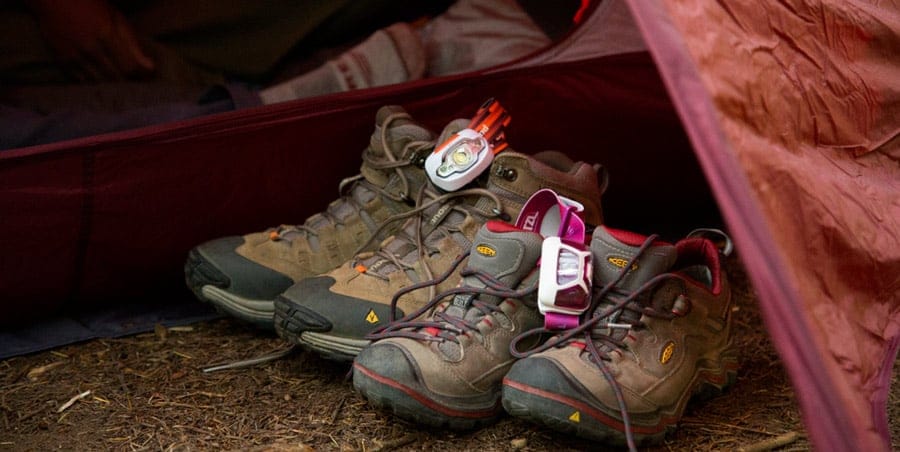
Organizing your camp well before dark, especially your tent and sleeping setup, gives you time to relax and enjoy the evening. That alone can contribute to a good night's sleep. Here are some more tips:
Choose a proper tent site: The first step is to make sure you pitch your tent on a flat, durable surface cleared of sticks, rocks and pinecones. For more information, read our article, How to Set Up a Tent.
Keep a light handy: Campers are often amazed at how dark the night feels outdoors. Wear a headlamp or keep a flashlight handy. Hang a small LED lantern inside your tent as soon as you set it up, so you can turn it on when you prepare for bed. Some tents now come with built-in LED lights for a gentle glow. Shop REI's selection of camp lighting.
Repeat familiar routines. If brushing your teeth is your final act before turning in each night at home, do the same in camp (brush a good distance from camp). Routines trigger a feeling of normalcy to your otherwise new surroundings. A familiar bedding item from home is often reassuring to children.
Store all food and scented toiletries securely outside of your tent. Food-storage rules vary from park to park, and you may need a bear canister if you're backpacking. Learn what the rules are and abide by them. Take care not to be sloppy with food or trash. If camping where bears are active, do not sleep in clothes that may have absorbed food odors. See our article on Food Handling and Storage.
Wear dry clothing. Change out of any dirty or sweaty clothes. A good sleepwear choice while camping is clean long underwear, top and bottoms, plus clean socks.
Avoid overdressing before you hop into your bag. Wearing bulky clothing inside a bag can actually reduce the bag's ability to efficiently trap body heat. Instead, drape items such as a jacket on the outside of your bag for an extra layer of insulation. Or bring an old comforter from home to serve as an extra layer when car camping.
Pee twice before going to bed. Some campers, women in particular, recommend going 20-30 minutes before bed, and then again immediately before getting into their sleeping bag. This can help prevent midnight trips.
Prepare for midnight restroom trips. Just in case, before you bunk down, place a pair of sandals or camp shoes near your tent door. Put a patch of carpet or a camp towel outside the tent door to serve as a sandal- or foot-cleaning doormat. And remember where your headlamp is.
Thirst: If you tend to get thirsty in the night, keep a water bottle next to your sleeping bag.
Night noises: Some novice campers lie there listening anxiously to every little sound outside the tent. It's wonderful to hear an owl, not so wonderful to think you hear a bear. Remember that small critters can sound large at night, so try to relax. If you've put away your food properly, you should be fine, or grab earplugs if you need them. (The white noise of a rushing stream can lull you to sleep if you're lucky enough to have it nearby.)
How to Stay Warm During the Night
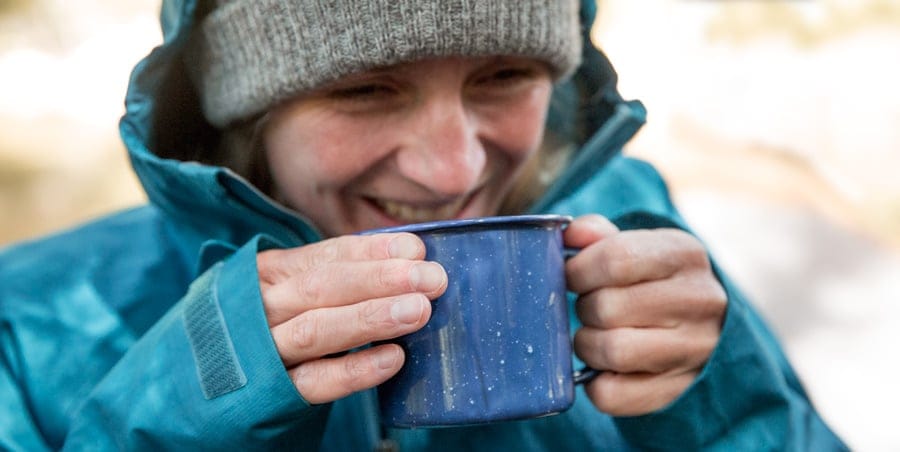
On warm, balmy nights, you may not even need to zip up your sleeping bag. Often campers will just tuck their feet into the bag's footbox and drape the bag over them. If you expect warm nights, bring a sheet and/or a light blanket from home. That might be all you need.
For camping in cold weather, or if you're a cold sleeper in general, these tips will help you stay warm:
- Eat a meal or light snack before bed. The process of digestion warms you internally, which generates the heat you need to sleep comfortably.
- Drink a warm, nonalcoholic beverage before hopping in the sack. (Alcohol dilates blood vessels, spurring heat loss.)
- Do a little exercise before finally plunking down and nodding off. Not too much, or you might become sweaty or wide awake. Sit-ups in your sleeping bag are an easy way to heat both you and your bag.
- Again, remember to wear your long underwear and clean, dry socks. If your neck tends to get cold, wear a cozy neck gaiter.
- Wear a warm knit hat if you're cold when you first get in your bag. You can easily pull it off in the night if you get too warm.
- Cinch the sleeping bag hood around your head, even if you're wearing a hat. On below-freezing nights, you might only leave an opening large enough for your nose and mouth.
- Add a closed-cell foam pad beneath your regular sleeping pad for extra insulation.
- Stuff dry clothing inside your sleeping bag to fill empty spaces, reducing the area your body must heat.
- Put a warm water bottle close to the core of your body, since your core is your body's chief heat-generating zone. To warm even more quickly, try putting it next to your femoral arteries (between your legs).



